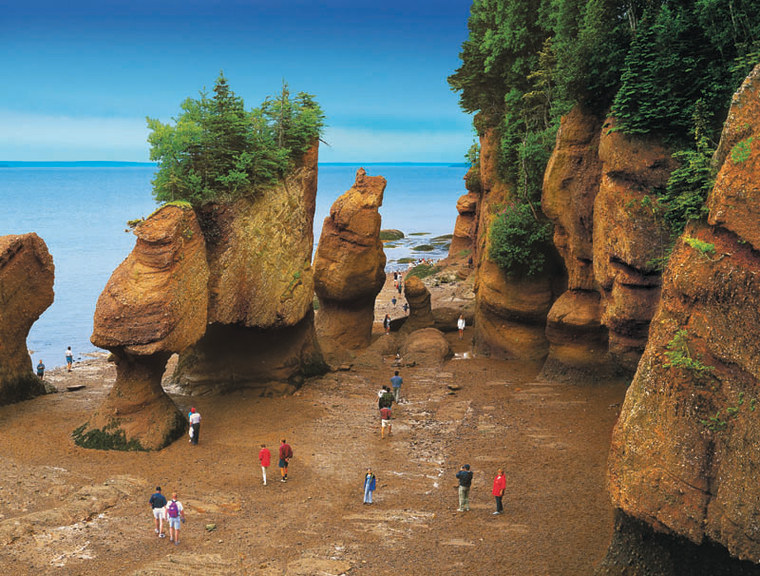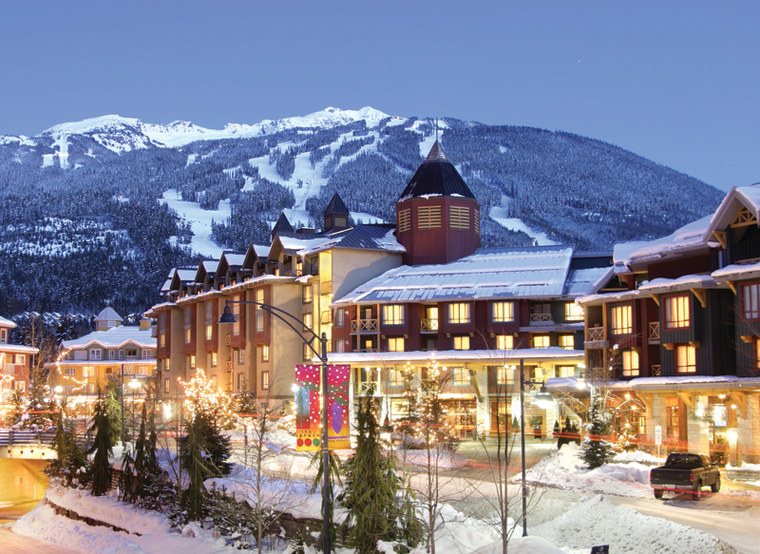The global recession may have lowered tourism numbers in many vacation spots, but at Grouse Mountain resort in North Vancouver, British Columbia, things are looking up, both literally and figuratively.
Attendance at the 82-year-old ski and recreation destination has remained lofty, increasing to 1.2 million in 2008 compared with 1.1 million the previous year, according to William Mbaho, the resort's public relations and communications manager. "Snow enthusiasm is not waning," he says, adding that so far in 2009 there has also been an increase in the number of students at the resort's ski and snowboarding schools.
But visitation isn't the only thing on the rise at Grouse Mountain. The SkyRide, North America's largest aerial tram system, "takes visitors a mile up the mountain to our alpine station, 3,700 feet above sea level," says Mbaho. "From there you have breathtaking panoramic views of the city, sea, and surrounding mountains."
The peaks and valleys of attendance at Canada's other big tourist draws were somewhat less dramatic than the view from Grouse's summit. The ’09 update to the list of most-visited Canadian tourist attractions shows modest increases or decreases at destinations where new figures were available. Visitation to Ottowa's Canadian Museum of Civilization and the Toronto Zoo jumped to 1.3 million last year at both venues, for example, up from approximately 1.2 million for both the previous year. But at the Ontario Science Center, attendance fell from 1.2 million to about 990,000—still enough to squeeze onto the low end of our list, though.
As our list reveals, the tourism hot-spots in Canada's 3.5 million square miles include the quaint (the narrow, restaurant-lined streets of Quebec City’s fortified old town, for example), but they also encompass the exotic and awe-inspiring (the thundering falls of Niagara or the stratospheric heights of Toronto’s CN Tower).
Not surprisingly, for a country renowned for its natural beauty, outdoor destinations figure heavily on the list. Canada’s national parks draw approximately 13 million visitors annually. The system’s crown jewel, Banff National Park, in the Canadian Rockies (in the province of Alberta) attracts scores of adventure-seekers and nature lovers.
Ellen Sellers, a representative of Carlson Wagonlit/Encore Travel in Bolingbrook, Ill., describes Banff as “the Switzerland of this hemisphere.” She says U.S. travelers are often surprised to find the area “much different than a park like Yellowstone. Banff is glacial, very green in the summertime. It’s fresh and cool.”

The Bay of Fundy, another Canadian natural wonder, straddling the eastern provinces of Nova Scotia and New Brunswick, is also a major tourist draw. Approximately 1.2 million visitors a year come to marvel at the world’s highest tide (the sea rises 50 feet in about six hours) and to take in the myriad natural phenomena, including several species of rare and endangered whales.
“Thirty percent of visitors to Fundy come from the U.S.,” says Bay of Fundy Tourism Partnership manager Terri McCulloch. “Likely this is due, in part, to the excellent high speed catamaran car ferry, ‘The Cat,’ that traverses the coast from Portland and Bar Harbor, Maine, to the town of Yarmouth, Nova Scotia, at the mouth of the Bay of Fundy.”
Americans account for the lion’s share of visitors at many of the Canada's top attractions. Travelers from the U.S. account for more than 76 percent of the 17.8 million foreign overnight visitors to Canada, according to the CTC’s latest annual report (2007).

As Canada’s largest city, Toronto is home to many of its most-visited tourist attractions. Harbourfront Centre, a 10-acre site on the waterfront, includes shops, restaurants, green space, art performance venues, an ice skating rink and an extensive boardwalk. It draws approximately 12 million visitors annually, and this year (2009), its summer arts festivals—including the largest Indigenous art festival in the world, "Planet IndigenUs"—are expected to draw two million alone.
“Toronto is known as one of the world’s most ethnically varied cities,” the CTC’s Carol Horne explains. Some 110 languages and dialects are spoken among the population of 2.5 million.
Looking out from her window in the CTC’s Vancouver office, Horne offers another example of Canada’s thrilling diversity: “I’m looking up at the mountains, and Stanley Park (the forested oasis in the middle of the city) is just down the street. And all this is side by side with some incredible local culinary experiences. You can ski and dine [downtown] all in one day.”
Vancouver is a prime example of what Horne calls Canada’s “vibrant cities on the edge of nature.” In addition to Stanley Park and Grouse Mountain, Vancouver’s Granville Island—an enclave of theaters, restaurants, shops and artists’ studios alongside a renowned public market—makes our list, with an estimated 10.5 million visitors annually.
Before we take a closer look at those sites of urban vibrancy and natural splendor that constitute Canada’s most-visited tourist sites, a word about methodology. We defined tourist attractions in Canada as discrete sites of historical or cultural interest; natural phenomena and landmarks; and delimited (or officially designated) spaces of entertainment and recreation. While some sites are included that have strong commercial components, standalone shopping malls and casinos have been excluded. Otherwise, Toronto’s Eaton Center, which claims one million visitors a week, would top our list.
We’ve used the most up-to-date available numbers from the tourist attractions themselves along with data from reputable media sources, government agencies, and tourism industry newsletters.
So which Canadian attraction welcomes the most visitors each year? See the slideshow to find out.
